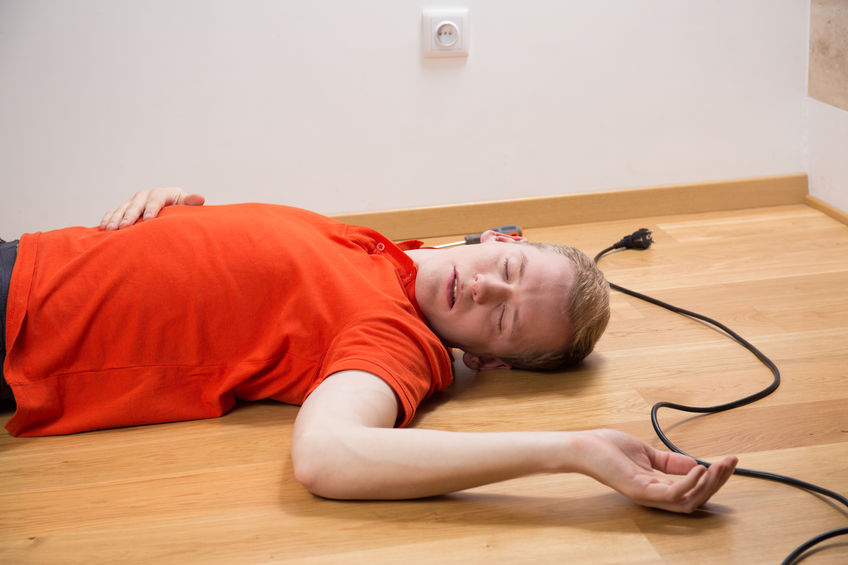
An electric shock occurs when a person comes into contact with an electrical energy source. Electrical energy flows through a portion of the body causing a shock. Exposure to electrical energy may result in no injury at all or may result in devastating damage or death.
Burns are the most common injury from electric shock.
Adolescents and adults are prone to high voltage shock caused by mischievous exploration and exposure at work. About 1,000 people in the United States die each year as a result of electrocution. Most of these deaths are related to on-the-job injuries.
Many variables determine what injuries may occur, if any. These variables include the type of current (AC or DC), the amount of current (determined by the voltage of the source and the resistance of the tissues involved), and the pathway the electricity takes through the body. Low voltage electricity (less than 500 volts) does not normally cause significant injury to humans. Exposure to high voltage electricity (greater than 500 volts) has the potential to result in serious damage.
If you are going to help someone who has sustained a high voltage shock, you need to be very careful that you don't become a second victim of a similar electrical shock. If a high voltage line has fallen to the ground, there may be a circle of current spreading out from the tip of the line. Your best bet may be to call 911. The electric company will be notified so that the power can be shut off. A victim who has fallen from a height or sustained a severe shock causing multiple jerks may have a serious neck injury and should not be moved without first protecting the neck.
A person who has suffered an electric shock may have very little external evidence of injury or may have obvious severe burns. The person could even be in cardiac arrest.
- Burns are usually most severe at the points of contact with the electrical source and the ground. The hands, heels, and head are common points of contact.
- In addition to burns, other injuries are possible if the person has been thrown clear of the electrical source by forceful muscular contraction. Consideration should be given to the possibility of a spine injury. The person may have internal injuries especially if they are experiencing any shortness of breath, chest pain, or abdominal pain.
- Pain in a hand or foot or a deformity of a part of the body may indicate a possible broken bone resulting from the electric shock.
- In children, the typical electrical mouth burn from biting an electric cord appears as a burn on the lip. The area has a red or dark, charred appearance.
Treatment depends on the severity of the burns or the nature of other injuries found.
- Burns are treated according to severity.
- Minor burns may be treated with topical antibiotic ointment and dressings.
- More severe burns may require surgery to clean the wounds or even skin grafting.
- Severe burns on the arms, legs, or hands may require surgery to remove damaged muscle or even amputation.
- Other injuries may require treatment.
- Eye injuries may require examination and treatment by an ophthalmologist, an eye specialist.
- Broken bones require splinting, casting, or surgery to stabilize the bones.
- Internal injuries may require observation or surgery.




